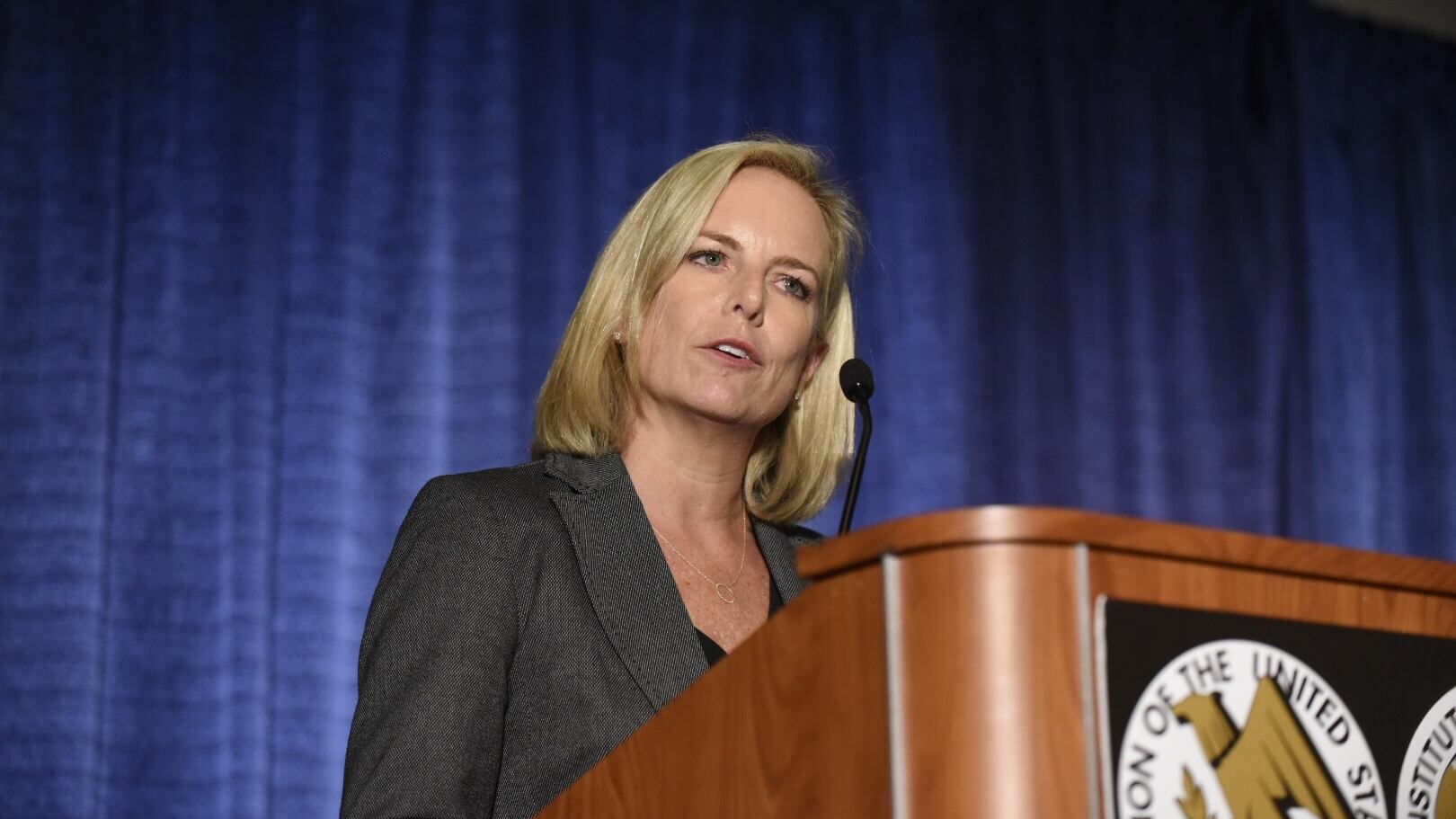The Department of Homeland Security’s combined responsibilities across natural disasters, physical threats and other dangers to the United States mean that the agency needs to rely more than ever on its relationships with the military, according to Secretary of Homeland Security Kirstjen Nielsen.
“In today’s world, where threat actors are crowdsourcing chaos, we too must crowdsource our response. This is only possible, though, through deep private, international and public cooperation,” said Nielsen Oct. 9 at the Association of the United States Army’s 2018 annual meeting in Washington.
“Partnerships used to be a ‘nice to have,’ but now they are a lifeline for Americans’ very survival. That is why DHS is deepening its ties across the military. We are coordinating our activities with [the Department of Defense] to better combat emerging threats, secure our borders and respond to natural disasters.”
RELATED

According to Nielsen, DHS has learned a “culture of resilience” from its military partnerships.
“Such a culture is not just about bouncing back; it’s about bouncing forward, adapting and innovating while under attack and coming back stronger to stare down the next attack more decisively than before. This philosophy is now central to the Department’s approach for defending the homeland,” said Nielsen.
In March 2018, DHS marked its 15-year anniversary, making it significantly younger and less-experienced than military services like the Army, which recently celebrated 243 years.
“Since our creation we have learned a lot from men and women in military uniform, especially the U.S. Army,” said Nielsen. “We still have much to learn from you. In that short time though, you have taught DHS much about being ready and resilient.”
Some of the core collaborations between DHS and DoD include coordination on DHS’s National Protection and Programs Directorate and related cyber efforts, natural disasters, increasing protections at the U.S. border and combating malicious drone activities.
“On just this past Friday, the president signed into law new authorities that will allow DHS to identify, track and take down dangerous drones that might pose a threat to major national events, sensitive facilities, DHS operations and more,” said Nielsen. “Our new authorities are fashioned after existing DoD authorities, and we will be working very closely together to apply lessons learned to our new counter-drone operations in the homeland.”
According to Nielsen, DHS and DoD coordination on certain efforts, especially in the wake of overwhelming natural disasters like those faced by the United States in 2017, is “critical to a speedy and effective response.”
Jessie Bur covers federal IT and management.
In Other News




